Of all the subjects I write about I think I get the most questions about hummingbirds. There is something mystical and wonderful about these tiny birds and people everywhere love to watch them in their yards each summer. They bring joy to a lot of people, myself included.
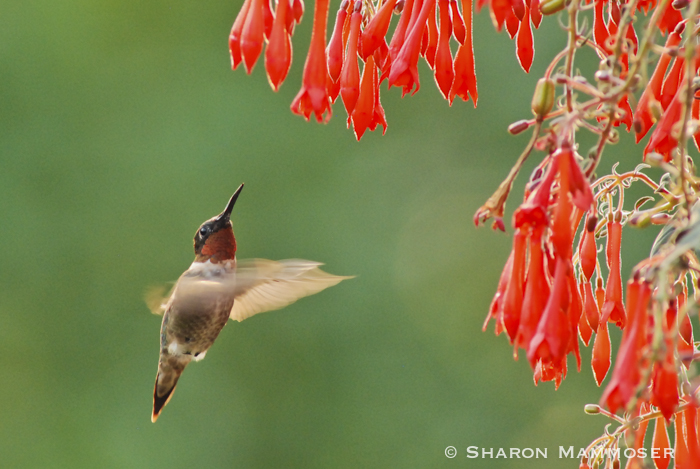
I thought I would share some of the questions readers have asked me over the years. These may be some of the same things you’ve been wondering but never got around to asking.
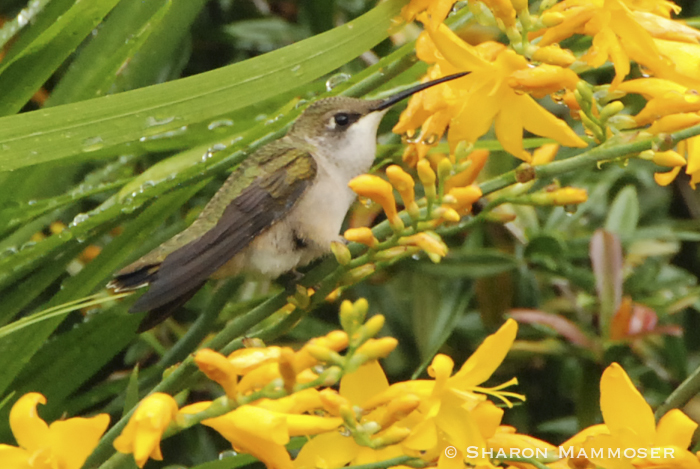
What kind of hummingbird is visiting my feeder? Answer: This one is only easy to answer if you live east of the Great Plains. That’s because in the east, like where I live in western NC, we only have ONE species of hummingbird–the ruby-throated hummingbird. On the other side of the county, it’s a lot more difficult, as there are multiple species that will visit the feeders and flowers. A reader on the west coast recently wrote to me and I learned that where she lives in California, she can have 14 different species! If you want help identifying birds, including hummingbirds, I recommend the Sibley guides –East and West depending on where you live.
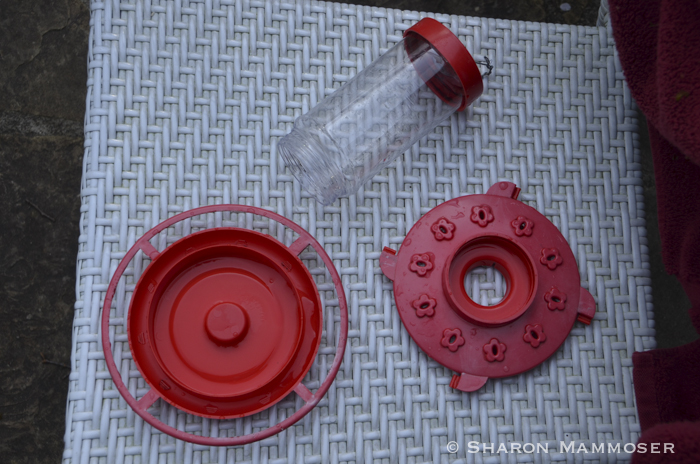
How do I make hummingbird nectar? Or should I buy it from the store? Answer: You should definitely make your own nectar as the kind you can buy in the store contains red dye which many biologists think is harmful to the birds. Plus it is cheaper to just make your own. All you need is water and granulated sugar. Making your own is super easy. Just measure one cup of plain, white sugar into a pitcher and then add 4 cups of hot water and mix. That’s it. Super simple.
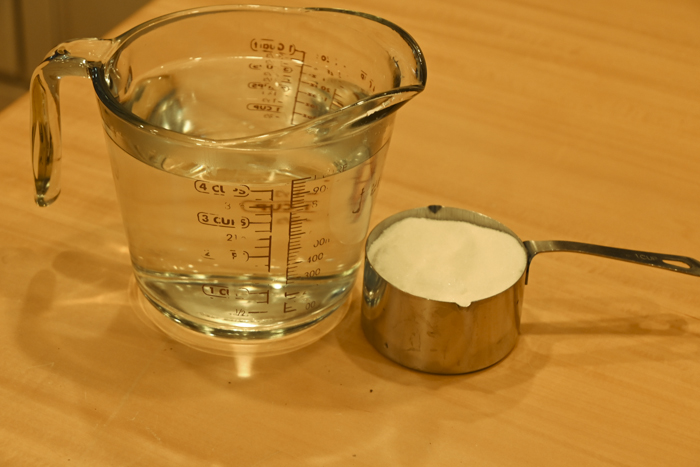
Do I need to boil my hummingbird nectar? Or should I microwave it? Answer: No, you do not need to boil or microwave your nectar. Just run HOT tap water and mix it up so the sugar dissolves. Then put it in the fridge until you need it. (Boiling the nectar won’t hurt and will make it last longer, so you can boil if you want. However, if you change, and make new nectar regularly, it is not necessary to boil it. )
How can I keep yellow jackets away from my hummingbird feeders?
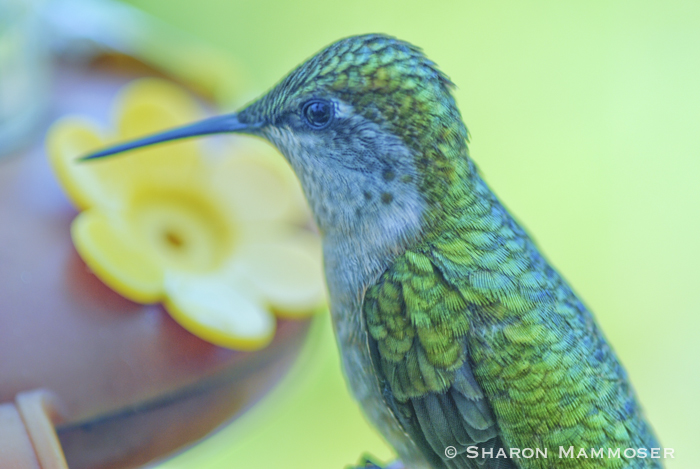
Answer: Yellow jackets are attracted to the color yellow so one way is to choose feeders that HAVE NO YELLOW. There are plenty of feeders on the market that have no yellow and are easily taken apart for cleaning. (Here is one, and another, that I recommend.)Another thing you can do is make sure your feeder doesn’t leak–leaking feeders often attract yellow jackets, bees and ants. Fix or replace a leaking feeder.
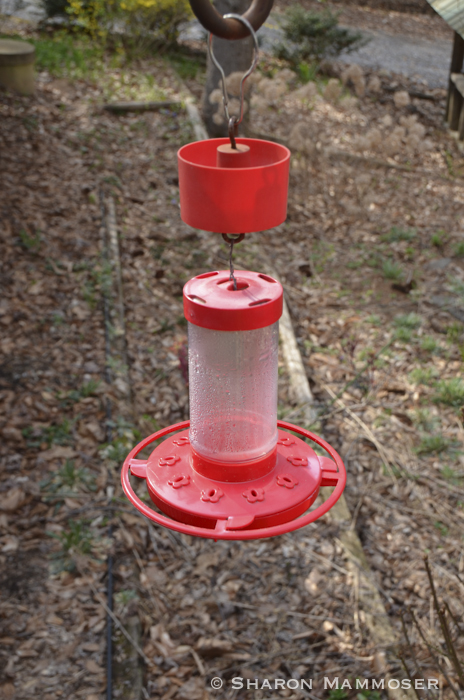
How can I keep ants out of my hummingbird feeder? Answer: Buy a feeder with an ant boat, like* this suction cup feeder that mounts right outside of your window for super-close-up viewing, or hang an ant moat above the feeder. Here’s a cheap one that works, or, you can get the one that looks like an upside-down umbrella.
I found a dead hummingbird in my yard. What do you think it died from? Answer: Hard for me to say. If it’s by a window I would suspect a collision perhaps. But if not, it’s impossible to say with certainty. Sometimes hummingbirds die of starvation from black mold in hummingbird feeders. Scientists have discovered that if there is a lot of black mold in the feeders they use, this can make their tongues swell up and then the birds could starve to death. Mother birds can even pass this fungus on to their babies. (Read more about that here.)
Clean your feeders often to prevent the buildup of black mold! Starvation is a slow and painful way to die–if you love hummingbirds, you must commit to keeping your feeders clean!
Can I use raw sugar, also called Turbinado, to make my nectar? Answer: PLEASE don’t! Though the word raw might sound like it would be better, it definitely isn’t, at least not for the little birds. Turbinado sugar contains a lot of iron and the small bird’s bodies cannot handle it. The iron builds up and can kill the birds. Please use only white, granulated sugar!
Here is an article about iron buildup in hummingbirds that ate raw sugar nectar.
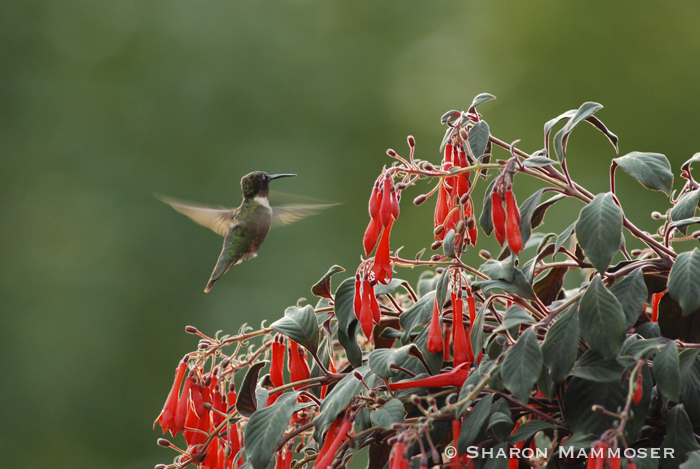
Where should I place my hummingbird feeders? Answer: Other than putting them in a shady spot, location is not that important. Shady spots allow the nectar to last longer than spots in the hot sun. I like to put mine in shady spots close to areas where I can easily watch the amazing birds. It helps if there is something nearby–a tree, bush, etc for them to land on and provide cover.
How often should I change out the nectar? Answer: It depends on where you live, where you place your feeders and what your habits are. A location of a feeder in the sun in Arizona will need to be changed a lot more frequently that a shady spot in the woods in NC. A good rule of thumb is every couple of days, unless it’s super hot, then maybe every other day. If you change the nectar regularly, and rinse the feeder out well each time, then it is much easier to keep the feeders clean. For most of my feeders, I never fill them up all the way because it just ends up wasting the nectar–better to put a smaller amount in and then clean, rinse and refill regularly. Extra nectar is kept in a pitcher in the fridge. Also, please note, if the nectar appears cloudy–it has fermented! You must change it out. Fermented nectar can harm the liver of the little birds.

10. What is the best hummingbird feeder? Answer: My favorite feeder is any feeder that comes apart easily, has no YELLOW on it, and has a built in ant moat. My favorite is the suction cup feeder with a built in ant moat* that I have on my office window. I love it because it allows me to see the birds super closely!
Hope you have found this helpful! Did you know you can plant flowers to attract these amazing birds? Here’s an article featuring some great flowers for attracting these birds.
Enjoy your hummingbirds!
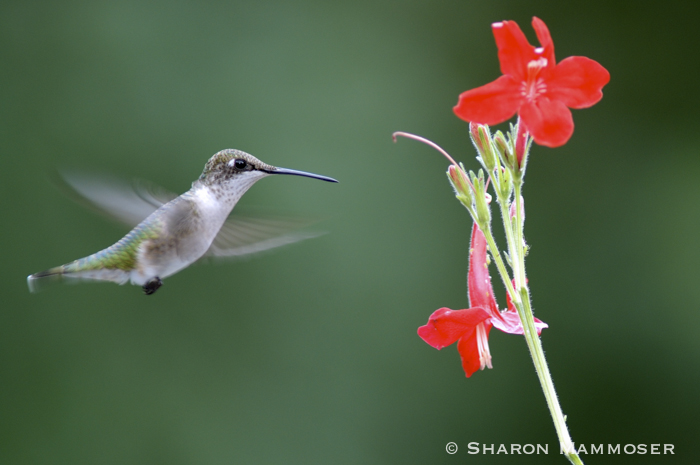


Love those hummers!!!!
Me too! Are you seeing a lot?
What is the magical, invisible line that has the east one having the one kind of hummer? So many varied and beautiful kinds out west.
I know, right? It is odd that the east only gets one and the west gets so many!
I really like seeing your photography on the side of the page
Thanks Hon! I’m glad you liked it–I sometimes forget that is there. Thanks for reminding me.